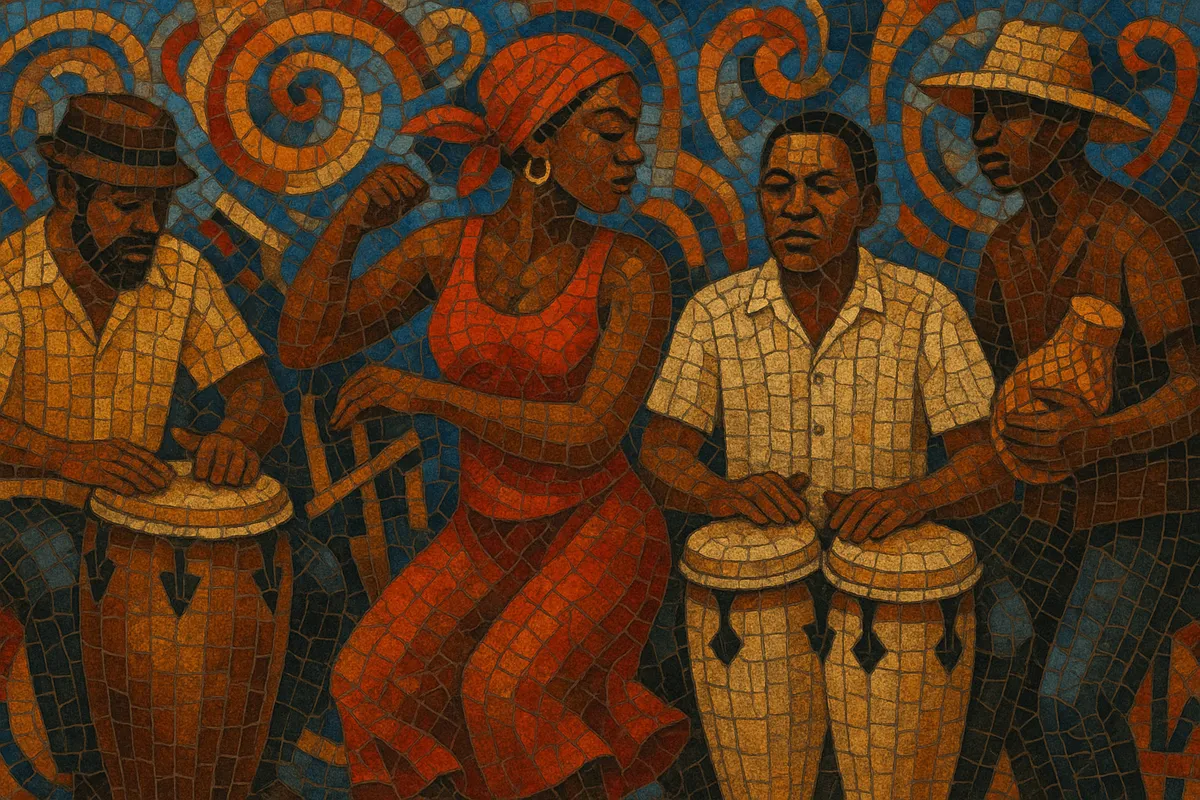Rumba cubana is an Afro‑Cuban secular music and dance tradition born in the working‑class solares and dockyards of Havana and Matanzas in the late 19th century. It is percussion‑driven, sung in call‑and‑response, and danced in a highly interactive way.
The genre revolves around the rumba clave (in 3‑2 or 2‑3 orientation), interlocking conga (tumbadora) parts, wooden sticks (palitos) on the drum shell, and often cajones (wooden boxes) and chekeré. Its main substyles are yambú (slow and graceful), guaguancó (medium tempo, playful “vacunao” courtship gesture), and columbia (fast, often in 12/8, originally a solo male competitive dance).
Rumba cubana is distinct from the ballroom “rhumba.” It is a community practice that blends Central/West African rhythmic logics with Spanish song poetry, improvisation, and dance theater.
After the abolition of slavery in Cuba, Afro‑descendant communities in Havana and Matanzas forged a new urban folk form from African drumming traditions (especially Bantu/Congo ngoma lineages) and Spanish song poetics. Performances took place in solares (tenement courtyards) and on the docks, using makeshift instruments such as cajones (shipping boxes) alongside hand drums, claves, and palitos. By the 1890s, recognizable substyles—yambú, guaguancó, and later columbia—had coalesced.
Early 20th‑century mentions describe rumba as a vibrant but sometimes policed street music. With commercial recording expanding mid‑century, ensembles began to codify drum parts, clave orientation, and the call‑and‑response vocal format for the studio, supporting a broader national profile. Although son, mambo, and bolero dominated the international market, rumba remained a bedrock of Cuban identity and percussion pedagogy.
Folkloric troupes (e.g., Conjunto Folklórico Nacional de Cuba) professionalized stage presentation, while neighborhood groups elevated virtuoso quinto improvisation. In the 1980s–90s, rumberos popularized guarapachangueo—a looser, densely syncopated drum aesthetic (championed by figures like Pancho Quinto and Yoruba Andabo)—which refreshed the tradition and influenced contemporary Cuban dance music.
Rumba’s techniques and repertoire became foundational for percussionists worldwide and for genres like salsa, timba, and Afro‑Cuban jazz. In 2016, Cuban rumba was inscribed by UNESCO on the Representative List of the Intangible Cultural Heritage of Humanity, affirming its cultural centrality. Today, community peñas, street rumbas, and festivals in Cuba and the diaspora keep the style evolving while preserving its core call‑and‑response, dance‑drum dialogue, and clave‑centered polyrhythms.


